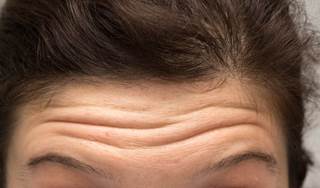
Overall, the participants reported that the facial exercise regimen was well tolerated, with 59% of the women indicating that the muscle contractions were very easy to perform.
A facial exercise regimen following botulinum toxin injections for glabella and forehead wrinkles may lead to faster improvement in facial wrinkles, according to the results of a randomized, controlled, crossover clinical trial. Findings were published in the Journal of the American Academy of Dermatology.
The investigators sought to explore whether exercising facial muscles after injections of botulinum toxin into the forehead and glabellar rhytids is associated with more rapid improvement in wrinkle appearance compared with injections without exercise. Eligible study participants comprised women who were in good health and had been recruited from an urban-based dermatology practice. All participants had dynamic rhytids of the glabella and forehead. The women were randomly assigned to perform either a facial exercise regimen or to refrain from facial contractions for 4 hours following botulinum injections.
Two blinded dermatologist photoraters assessed forehead and glabella dynamic creases at baseline and on days 1, 2 3, 4, 7, and 14. Each of the women also assessed her own dynamic creases using a 7-point Subject Self-Evaluation Improvement Scale (–3 to +3). All participants were crossed over to the other arm at 7 months.
Of the 25 women who consented and enrolled in the study, 22 completed the study per protocol. The mean age of the participants was 46.7 years (range, 27 to 66 years). Both the dermatologists and the participants rated dynamic glabellar and static forehead wrinkles as significantly improved by day 3 when botulinum injection was followed by facial contractions (dermatologists' ratings: P =.002 and P =.02, respectively; participants' ratings: P =.01 and P =.02, respectively).
The women also reported significantly noticeable glabellar improvement by day 2 to 3 when the injection was followed by facial exercise, compared with day 3 to 4 without facial exercise (P =.02). In fact, a significant advantage was detected in the exercise group as early as day 3, at which time participants' self-evaluation wrinkle scores increased by approximately twice as much among the exercisers compared with the nonexercisers. The overall degree of effect was the same in both the exercise and nonexercise groups at 14 days. Further, the duration of action did not appear to differ between the exercise and nonexercise arms.
Overall, the participants reported that the facial exercise regimen was well tolerated, with 59% of the women indicating that the muscle contractions were very easy to perform. Of the participants, 68% thought that the contractions sped up the onset of action and increased the toxin efficiency and did not have an impact on the duration of effectiveness.
The investigators concluded that based on the results of this analysis, future studies could include men and could be performed for other neuromodulator agents, at different injection sites, and using different types of exercise regimens to establish minimal needs.
Reference
Alam M, Geisler A, Warycha M, et al. Effect of post-injection facial exercise on time of onset of botulinum toxin for glabella and forehead wrinkles; a randomized controlled, crossover clinical trial [published online October 1, 2018]. J Am Acad Dermatol. doi: 10.1016/j/jaad.2018.10.013
